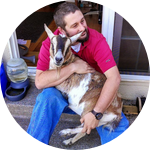The Paper is Submitted!
After a summer of reanalysis to confirm our results, and a fall/winter of writing, the manuscript "Preliminary report of microplastic accumulation in shrimp (Rimicaris exoculata) and snails (Iheyas...
Long delay between updates but a ton of progress
By the end of the year, we had completed the first round of pilot studies and I am in the process of writing up the first set of observations as a short communication. In the meantime, we also iden...
First results from the Mid-Cayman Spreading Center
As always, these are preliminary results. There's a lot more work left to do. Our first analysis from shrimp and gastropods at the deepest known vent system reveals that not only is microplastic ac...
First major assay
All summer we've been working on nailing down the right protocol and performing a cursory scan of our samples to identify the first sample cluster to really dive into. After finding a single shrimp...
The next set of samples is cooking.
Now that I have the extraction process dialed in, it's time to start looking more broadly at the deep-sea samples. For this next pass, I'm looking at shrimp, squat lobsters, and barnacles from a hy...
First report of microplastics in the bodies of deep-sea hydrothermal vent organisms.
Over the last week I have been refining my extraction and staining technique. The first results are in.This is the filtered remains of five limpets from the deep sea that were digested in KOH, filt...
Prepping the first samples.
They don't look like much, but our first ten samples are on the slow march towards microplastic analysis. These limpets are Olgasolaris tollmannii, a deep-sea species that lives on the shells of la...
Update and Summer Plan
We're about to start cruising here! Last month I got a surprise grant awarded for a different project that needed to be fulfilled by June 15, so apologies for the silence here but we got that done ...
We are funded!
Thank you to everyone who contributed to this campaign! I look forward to keeping you updated as the project develops over the next six months. And for those wondering, Blackbeard Biologic (my comp...



